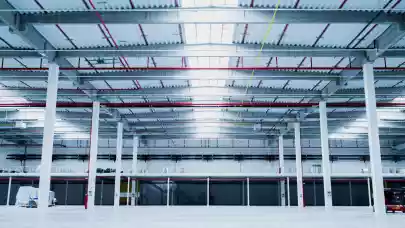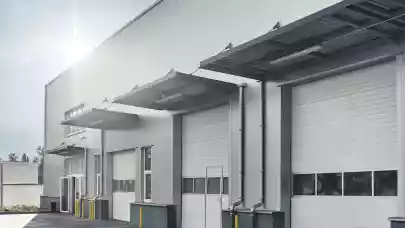
In 2022, the industrial market remained one of the fastest-growing real estate sectors in Poland despite supply chain disruptions that sent rents and construction costs rising. 2023 is shaping up to be a year of buzzwords such as nearshoring, reshoring and friendshoring, with the biggest challenges being cost optimization and looking for savings, says Jakub Kurek, Head of Industrial and Warehouse at Newmark Polska.
New supply hit a record high in 2022 following a period of strong development activity. Poland’s total industrial stock expanded by close to 3.6 million sqm in the first three quarters, up by around 16% on the peak year of 2021. And the fourth quarter is expected to see at least 1 million sqm delivered onto the market. Development activity steadily slowed down in the last two quarters. At the end of the third quarter of 2022, Poland’s development pipeline comprised just under 4 million sqm and is expected to shrink to around 3.6 million sqm by the end of the year.
High financing costs have led to a slowdown in new industrial project starts and speculative construction in particular. Another drag on development activity is banks’ pre-let requirement of 50% or more. 2023 is therefore expected to see more BTS and BTO projects breaking ground due to lower risk compared to speculative construction. Consequently, developers who will commence speculative projects, especially in locations with low vacancy rates, will have the upper hand in lease negotiations.
Occupier demand for warehouse space remained relatively strong throughout 2022 although high construction costs and rising service charges saw companies take a more cautious approach to business development plans. Total take-up surpassed 5.3 million sqm in Q1-Q3, but given the average last-quarter volumes for the last five years, another 1.6 million sqm is likely to be transacted by the end of this year. Similarly, as with the office market, we are seeing occupiers’ growing focus on lease regearing and renewing. Renegotiations and renewals accounted for close to 30% of the total take-up in Q1-Q3 and for almost 40% in the third quarter alone.
Demand continues to come predominantly from e-commerce and logistics. However, reshoring is also gaining momentum as more and more manufacturing companies are deciding to relocate all or part of their operations to Poland. This is confirmed by Reuters’ latest report “A generational shift in sourcing”: according to survey respondents, Poland will be one of the key beneficiaries of manufacturing relocation closer to home in order to reduce risk exposure to supply chain disruptions.
Since the beginning of 2022 rents have risen by around 15%-20% and by up to 30% in some locations, but are slowly stabilizing. Further rental growth is, however, possible in the most sought-after locations. Headline rents in newly-built warehouses currently stand at over EUR 4/sqm/month – a level that is already broadly accepted by the industrial market and is likely to stay with us for longer.
Growing environmental awareness will accelerate the roll-out of ESG solutions in warehouses. Both tenants and developers are already taking action to reduce utility usage and especially energy consumption or to create more user-friendly work environments. ESG solutions can bring meaningful results such as lower operating costs and better value for both tenants and potential investors.



